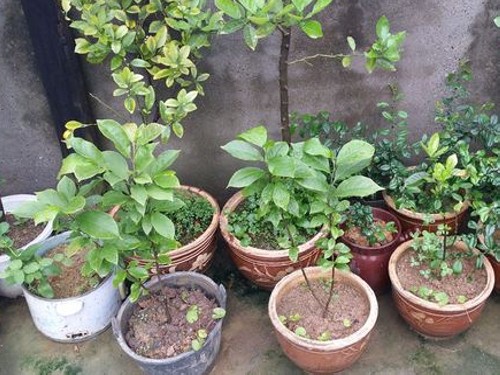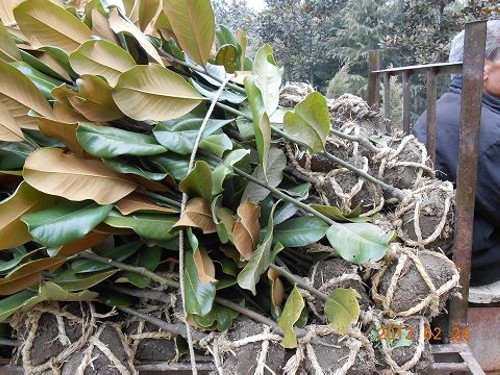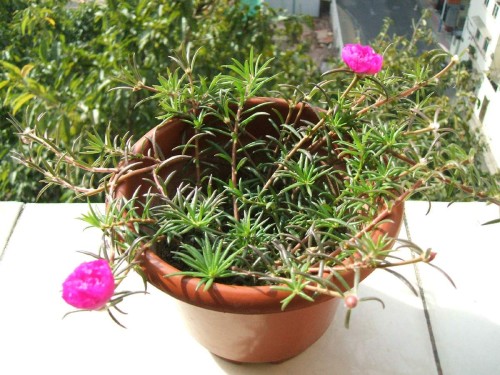Planting technique of Magnolia lanceolata / Magnolia magnolia
Magnolia Magnolia, also known as Magnolia Magnolia, originated in the southeastern United States. It is widely cultivated in the warm temperate zone of our country, in the Yangtze River basin and in the cities to the south. Its tree shape is simple and elegant, the leaves are full-bodied, the luster is bright green all the year round, and the flowers are fragrant, so it has high ornamental value. Magnolia lanceolata can be used as landscape, street tree and shade tree. Magnolia magnolia trees magnificent, leaves shady thick, flowers like lotus, fragrant. Ornamental tree species for beautiful landscaping. It is suitable to plant alone, in clusters or in rows. The following is to introduce the planting technology of Magnolia mandshurica.

1. Season: early spring is suitable for transplanting Magnolia magnolia trees, but the Meiyu season is the best. About half a month after the Spring Festival, Magnolia magnolia is still in a dormant period, slow sap flow, slow metabolism, can be transplanted at this time. After transplanting, when the temperature rebounded in spring that night, the root system first germinated, grew and repaired, coupled with careful management, it basically did not affect the growth of Magnolia magnolia in that year, coupled with large rainfall and high air humidity in the plum rain season, the survival rate of Magnolia magnolia transplanted at this time was very high. However, when transplanting, it is best to choose cloudy or cloudy weather to avoid rainstorm or high temperature.
2. Soil ball: the size of soil ball is the key to the success or failure of Magnolia transplanting. In general, the diameter of the soil ball in East China is 8 to 10 times of the DBH of the tree, which can ensure less damage to the root system and easy to restore the tree potential. If the soil ball is too small, the root system will be seriously damaged, resulting in difficulty in absorbing water and affecting the survival of trees. The earth ball should be dug into the shape of a gyroscope instead of a plate or cone. The soil ball should be fastened with straw rope to prevent it from becoming loose during transportation.
3. Moisture: Magnolia magnolia root is fleshy root, so it is easy to lose water, so it is necessary to dig, transport and plant quickly and timely, so as not to lose too much water and affect survival. After transplanting Magnolia magnolia should be watered in time for the first time and watered thoroughly so that the root system can fully contact with the soil and be beneficial to the survival of the tree. If there is too much precipitation after transplantation, it is necessary to open a flume to avoid stagnant water in the roots, resulting in the death of the rotten roots of Magnolia magnolia.
4. Pruning: cutting leaves through pruning can reduce water evaporation and relieve the water supply pressure of injured roots. Pruning should trim the inner bore branches, overlapping branches and disease and insect branches, and strive to maintain the integrity of the tree shape; it is appropriate to pick 1 leaf blade of the smooth branches, otherwise it will reduce the transpiration pulling force and make it difficult for the root system to absorb water.
[cultivation method]
1. Hole digging: Magnolia magnolia has a deep and slightly acidic soil environment, so the method of changing soil with large holes should be adopted to plant Magnolia magnolia. Methods: for Magnolia magnolia which is 1 to 2 meters high, the tree hole should be 1 meter long, 1 meter wide and 1 meter deep.
2. Planting: for the initial cultivation of Magnolia magnolia, we should pay attention to the isolation of salt and alkali, and the planting hole can use slag, coarse sand and other materials to cover the bottom, which can be used as the alkali isolation layer, and the prepared planting soil can be used above. The method is:
After digging the hole, fill 30 cm of slag into the water seepage layer and spread a layer of grass on top of the slag to prevent the upper half of the soil from flowing into the slag crevice due to watering. With the prepared planting soil, mixed with humic acid fertilizer, mature organic fertilizer and saline-alkali soil improvement fertilizer, fill the tree hole and tamp it to a depth of 50 cm from the ground. After that, fill the planting soil into the tree hole and tamp it to 45 cm from the ground, so that the broken root will not be in direct contact with the fertile soil, and it is not easy to produce rotten roots.
3. Put Magnolia magnolia gently into the tree hole and turn it in the direction to make its sunny side to the south. Cut the grass rope and pull it out to ensure that Magnolia magnolia has a new root and is in direct contact with the soil.
4. Finally, fill in the mixed soil.
Note:
1. The flower buds should be cut off in time when young, so that the strong buds under the cutting mouth can quickly form an advantage, grow upward, and remove the terminal buds of the lateral branches in time to ensure the advantage of the central main branch. After planting, retract and prune the main branches that are too horizontal or drooping, maintain the balance between the branches, make the main branches of the insult wheel scattered with each other, avoid overlapping growth up and down, and make full use of the space. Cut off the root sprouting a-strip at any time in summer. Thinning and cutting the dense branches, disease and insect branches in the crown. For the first round of main branches on the trunk, cut off the upward branches. The new branch near the top of the main branch should pay attention to coring, so as to reduce the competitiveness of the main branch and the nearby branch to the central main branch.
2. During the transplanting period, spring migration should be before root germination in the middle of March, and autumn planting should be no later than October. The survival rate of Magnolia mandshurica planting was higher than that of bare root planting, and there was a negative correlation between seedling age and survival rate, and bare root planting was more prominent. Tree greening, in order to improve the survival rate, without destroying the crown shape, it is necessary to properly thinner branches and trim leaves, set up pillars in time after planting, and strengthen support.
Time: 2019-05-25 Click:
- Prev

Grafting technique of Magnolia Magnolia (Magnolia Magnolia)
Magnolia is called Magnolia because it was first introduced to Guangdong Province. Magnolia magnolia, also known as Magnolia Magnolia, Magnolia magnolia, evergreen trees, tall, shaped like lotus, fragrant, has the function of absorbing dust in the air, and has a certain resistance to toxic gases
- Next

Seed planting method of Scutellaria barbata / sunflower
Sunflower also has pine leaf peony, Scutellaria barbata and other aliases, belongs to Portulaca oleraceae, the scientific name is Portulaca oleracea. It is a recommended Bensheng plant, growing close to the ground, with a seedling height of no more than 10 cm, so it is very suitable for families to grow flowers in the courtyard, and has been widely planted as a small potted plant in recent years.
Related
- Fuxing push coffee new agricultural production and marketing class: lack of small-scale processing plants
- Jujube rice field leisure farm deep ploughing Yilan for five years to create a space for organic food and play
- Nongyu Farm-A trial of organic papaya for brave women with advanced technology
- Four points for attention in the prevention and control of diseases and insect pests of edible fungi
- How to add nutrient solution to Edible Fungi
- Is there any good way to control edible fungus mites?
- Open Inoculation Technology of Edible Fungi
- Is there any clever way to use fertilizer for edible fungus in winter?
- What agents are used to kill the pathogens of edible fungi in the mushroom shed?
- Rapid drying of Edible Fungi

